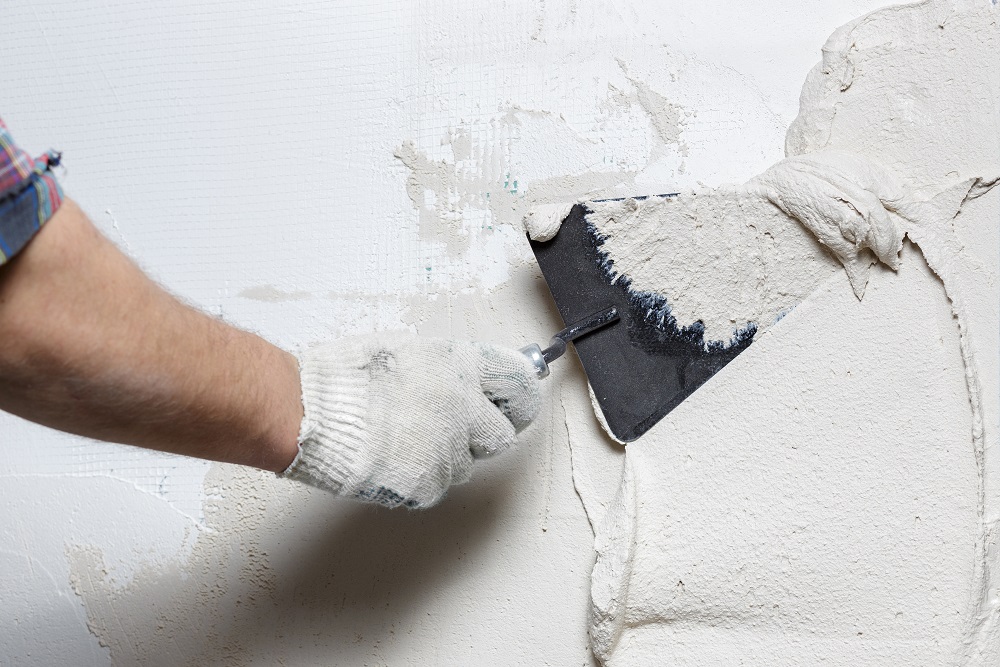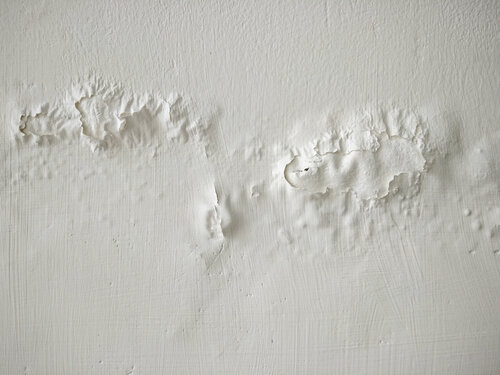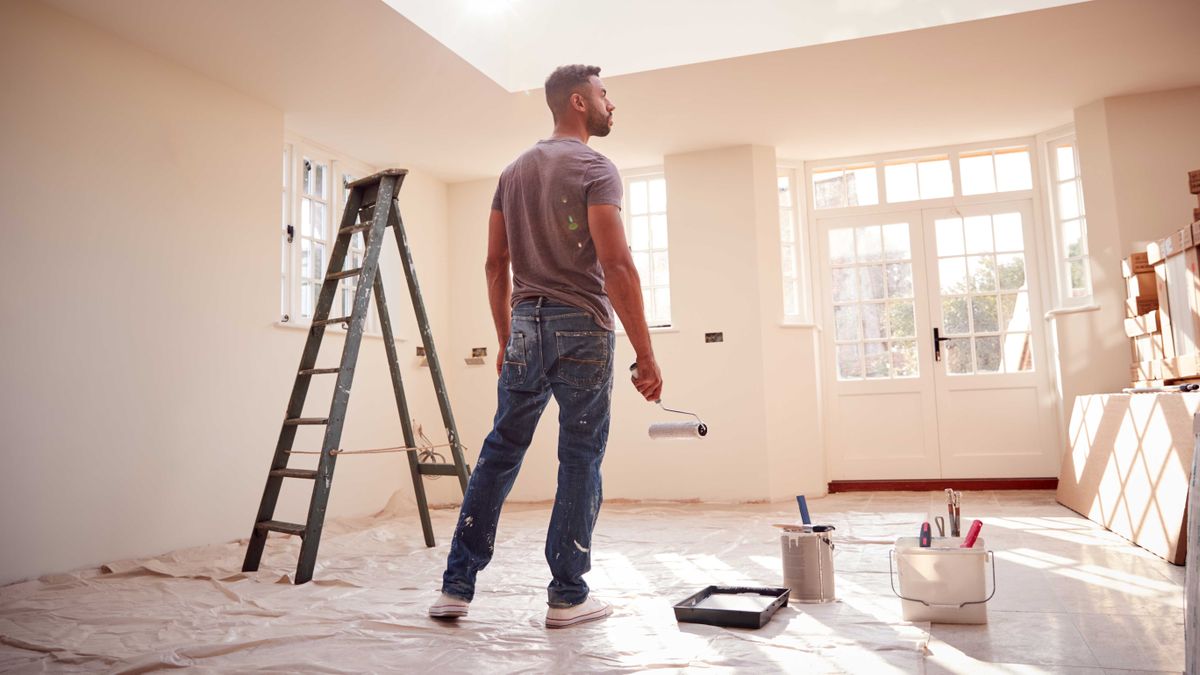The process of wallpapering starts with painting the wall. Wallpapers stick well on surfaces that are not shiny, those with a rough finish, matte, or flat finish are preferred since they offer more friction than shiny ones. Therefore, be careful with the types of paint you select!
The best place to begin is always with the paint you choose since compatibility with the surface will enhance adhesion to your pavers. Then, it is necessary to wash the surface well so that there are no remnants of dust or oil that will prevent the adhesive from sticking well. After this, to increase the degree of roughness and thus grip sanding the wall may be beneficial. It is also important to prepare the wall to get better bonding and to avoid any moisture problems. With such critical steps, you create the groundwork for a good wallpaper installation that transforms your area.
1. Choose the Right Paint
The kind of paint on your wall is highly important when using removable wallpaper. Do not use stain-blocking, scrubbable or No VOC paints as these will not allow correct adhesion. If you want your paint job to be removed without compromising the wall, go for an eggshell, satin or gloss finish as they offer a smooth finish. Note that the use of matte or flat paints can lead to having a rough surface, therefore when washing or pulling the wallpaper off; it may stick.
2. Recently Painted Walls: Allow Time for Drying!
Generally speaking, it is advised to wait for at least four weeks after painting a wall before you start applying wallpaper. The walls under the paint may still be damp, and the paint releases a smell that causes bubbles in the wallpaper.
Low VOC paints can release fumes for weeks after application and if wallpaper is put on before the paint fumes have dissipated, the wallpaper can bubble greatly. If you want to get the best outcome of your work, it is important to wait until the paint is dry and there is enough fresh air in the room before starting to wallpaper.
3. Check for Stain-Blocking Ability
Stain-blocking paints when used can prevent the paint from sticking to the walls properly as intended. If an owner or tenant painted a wall before, to know if it has stain-blocking properties, a physical examination is crucial.
In general, oil-based paints are always known to prevent or hinder stains. It is important to test a sample if there is any doubt of the paint being an oil-based paint even though not all such paints exhibit this characteristic. Rubbing of a sample directly on the wall is the most effective way of testing for stain-blocking properties.
4. Low or Zero VOC Paints

Low or zero-VOC paints offer a green solution to conventional wall paints for your home or commercial building. These options are sustainable and minimize the emission of fugitive compounds into the atmosphere.
However, the installation of wallpapers can be challenging on walls with low or zero VOC paint. These paints, however, may not adhere well to the surface and the wallpaper may peel off the wall.
Before pasting the wallpaper it should be cleaned using a solution of 70% isopropyl alcohol and 30% water and then allowed to dry before wallpaper is pasted on the wall.
5. Repair Cracks on Drywall

Many people like to cover the cracks and splits in the drywall with wallpaper, but it will only last for a few years at most. Do not use filler for small cracks and splits not more than ½ inch, use joint compound instead. Before proceeding, there is an important point that must be highlighted: the use of wallpaper on dry walls is not possible as the drywall will absorb the paste and the wallpaper will begin to peel or blister. When it comes to wider splits, the drywall tape or patch kits should suffice, so use them. This will be followed by applying a coat of satin or gloss paint after sanding the area with sandpaper.
Wallpapers are expected to make your walls attractive and therefore they should not be used to cover up any problem that is there. But use them wisely to make the atmosphere look great. Hanging wallpaper involves applying a paste on the drywall meant to create a surface that does not allow the paste to penetrate the wall hence promoting a successful wallpapering process. It also assists in the exclusion of moisture which is capable of penetrating the wall and hence development of mold.
6. Fissured Paint on Plastered Surface

There are usually contraction cracks in the plaster walls of old houses and these are of two kinds – structural and nonstructural. Structural cracks are quantified by the length and thickness and will shift position when pressure is applied on one side of it. Hairline cracks are narrower and look like spider webs, which are usually seen when the outer skin of the plaster has failed.
To fix these cracks, the problem must be fixed instead of merely masking it with paint or wallpapering. Small cracks should be repaired by a professional painter while structural cracks should be repaired by an experienced plasterer. Small cracks are covered with a joint compound while big structural cracks need the existing loose plaster and lath to be taken out before a new layer of plaster, or drywall tape and a new coat of joint compound is applied.
Once the damage has been fixed, the surface must be grounded and sanded to give it a smooth surface that can be painted or papered. It is also important because it produces a permanent and neat finish.
7. Latex Paints
Latex paints are preferred for their washability and low VOC emissions but they are problematic when put on wallpapers. Although latex paint is water soluble, it soaks up wallpaper paste thus creating a poor adhesion of the wallpaper to the wall. In this case, it results in poor adhesion and an unsuccessful installation of the product in question.
8. Use a Wallpaper Primer
When it comes to hanging wallpaper, it is important to use a wallpaper primer, especially on latex-painted walls. The primer work forms a layer that prevents the wallpaper paste from penetrating deep into the wall hence improving on adhesion and also providing a smooth surface for the wallpaper paste. Also, it is useful in minimizing the possibility of water absorption which results in the growth of molds. By doing so you pave the way for a proper and long-term wallpapering job to be done.
Conclusion
To sum up, wall pavers may be applied to a painted wall to give a new look to any area and make the walls look textured. The reason is that the paint, the surface, and the adhesive used must be examined well, cleaned, and used appropriately to create a stronghold and a neat look. The decision to level and make the last adjustments for each paver will help to achieve a high level of work. If done effectively, a painted wall can be turned into a masterpiece in your house or workplace, provided you follow some steps.
FAQs
Can wallpaper be used over any paint?
Do not use stain-blocking, scrubbable, or no VOC paint because they will hinder adhesion. However, the best finishes to use are the eggshell, satin, and gloss ones.
How do I know if my paint is also stain-blocking?
If you’re still not sure, take a sample of the paint on your hand and apply it to the affected wall. Oil-based paints contain some elements that work as stain blockers and these hinder the wallpaper adhesion.
Are low or zero-VOC paints suitable for wallpapering?
Low or zero-VOC paints are environmentally friendly but they are likely to fail adhesion on wallpapers. Before putting up the wallpaper, it’s better to wash the walls with a solution of isopropyl alcohol in water.
Hi there, you are here because you want a peaceful bedroom. Don’t worry I’m here to help you out in every aspect to make your bedroom a personal sanctuary.
